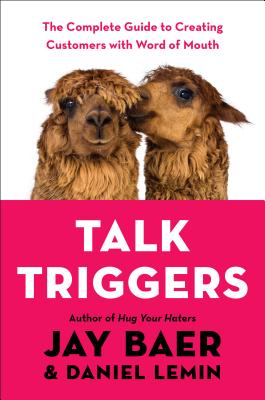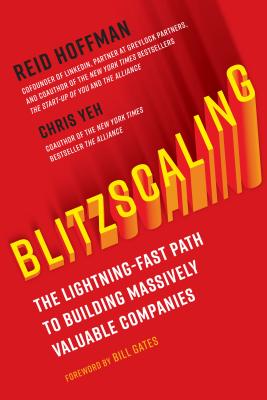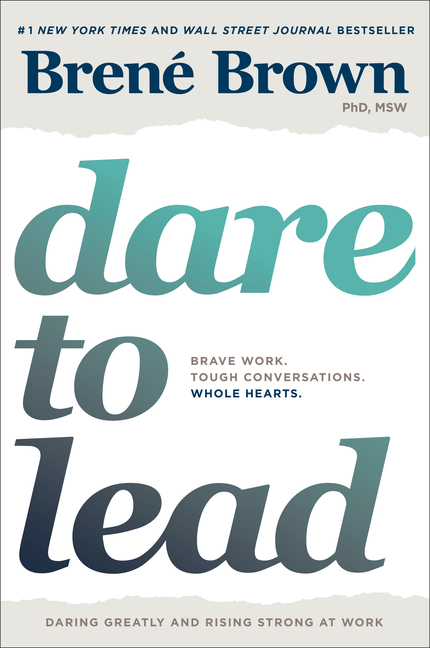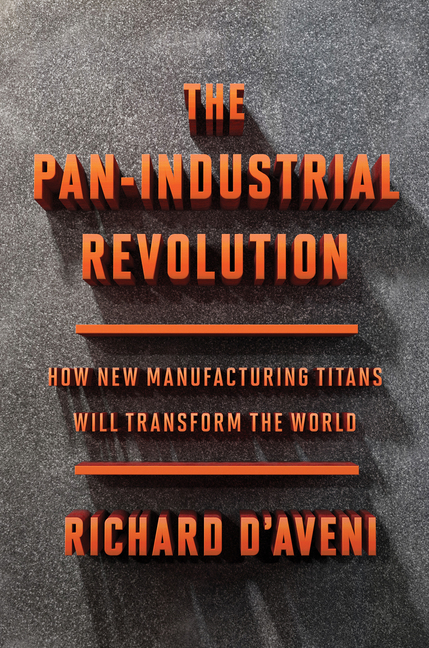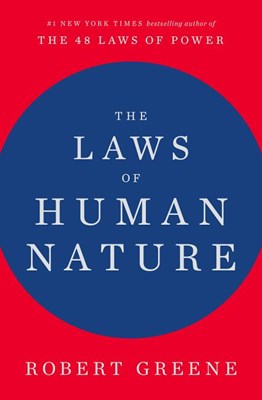Business Books to Watch in October
October 03, 2018
These are 25 of the best books in a flood of great books being released in October.
In the general order of their release dates, these are 25 of the best books in a month filled with really exceptional books.
 The Gift of Global Talent: How Migration Shapes Business, Economy & Society by William R. Kerr, Stanford Business Books
The Gift of Global Talent: How Migration Shapes Business, Economy & Society by William R. Kerr, Stanford Business Books
While the U.S. has been the top destination for the world's star workforce, its future position is uncertain.
The global race for talent is on, with countries and businesses competing for the best and brightest. Talented individuals migrate much more frequently than the general population, and the United States has received exceptional inflows of human capital. This foreign talent has transformed U.S. science and engineering, reshaped the economy, and influenced society at large. But America is bogged down in thorny debates on immigration policy, and the world around the United States is rapidly catching up, especially China and India. The future is quite uncertain, and the global talent puzzle deserves close examination.
To do this, William R. Kerr uniquely combines insights and lessons from business practice, government policy, and individual decision making. Examining popular ideas that have taken hold and synthesizing rigorous research across fields such as entrepreneurship and innovation, regional advantage, and economic policy, Kerr gives voice to data and ideas that should drive the next wave of policy and business practice.
The Gift of Global Talent deftly transports readers from joyous celebrations at the Nobel Prize ceremony to angry airport protests against the Trump administration's travel ban. It explores why talented migration drives the knowledge economy, describes how universities and firms govern skilled admissions, explains the controversies of the H-1B visa used by firms like Google and Apple, and discusses the economic inequalities and superstar firms that global talent flows produce. The United States has been the steward of a global gift, and this book explains the huge leadership decision it now faces and how it can become even more competitive for attracting tomorrow's talent.
 Talk Triggers: The Complete Guide to Creating Customers with Word of Mouth by Jay Baer & Daniel Lemin, Portfolio
Talk Triggers: The Complete Guide to Creating Customers with Word of Mouth by Jay Baer & Daniel Lemin, Portfolio
Talk Triggers is the definitive, practical guide on how to use bold operational differentiators to create customer conversations, written by best-selling authors and marketing experts Jay Baer and Daniel Lemin.
Word of mouth is directly responsible for 19% of all purchases, and influences as much as 90%. Every human on earth relies on word of mouth to make buying decisions. Yet even today, fewer than 1% of companies have an actual strategy for generating these crucial customer conversations. Talk Triggers provides that strategy in a compelling, relevant, timely book that can be put into practice immediately, by any business.
The key to activating customer chatter is the realization that same is lame. Nobody says “let me tell you about this perfectly adequate experience I had last night.” The strategic, operational differentiator is what gives customers something to tell a story about. Companies must dare to be different and exceed expectations in one or more palpable ways. That’s when word of mouth becomes involuntary: the customers of these businesses simply MUST tell someone else.
Talk Triggers contains:
- Proprietary research into why and how customers talk
- More than 30 detailed case studies of extraordinary results from Doubletree Hotels by Hilton and their warm cookie upon arrival, The Cheesecake Factory and their giant menu, Five Guys Burgers and their extra fries in the bag, Penn & Teller and their nightly meet and greet sessions, and a host of delightful small businesses
- The 4-5-6 learning system (the 4 requirements for a differentiator to be a talk trigger; the 5 types of talk triggers; and the 6-step process for creating talk triggers)
- Surprises in the text that are (of course) word of mouth propellants
Consumers are wired to discuss what is different, and ignore what is average. Talk Triggers not only dares the reader to differentiate, it includes the precise formula for doing it.
Combining compelling stories, inspirational examples, and practical how-to, Talk Triggers is the first indispensable book about word of mouth. It’s a book that will create conversation about the power of conversation.
 The Messy Middle: Finding Your Way Through the Hardest and Most Crucial Part of Any Bold Venture by Scott Belsky, Portfolio
The Messy Middle: Finding Your Way Through the Hardest and Most Crucial Part of Any Bold Venture by Scott Belsky, Portfolio
Entrepreneur, Chief Product Officer at Adobe, and product advisor to many of today’s top start-ups Scott Belsky believes we focus too much on the start and the finish of any project, ignoring the most important part—the messy middle—where success is truly determined.
Creating something from nothing is a volatile journey. The first mile births a new idea into existence, and the final mile is all about letting go. We love talking about starts and finishes, even though the middle stretch is the most important and often the most ignored and misunderstood.
Every business or creative project is “going great” until it fails—the bumps along the road are endured in isolation. We don’t talk about the middle because we’re not proud of the turbulence of our own making and the actions we took out of despair. This book sets out to change that.
Belsky draws on his experiences building Behance, selling it to and leading product teams at Adobe, and then working as an investor and advisor with companies like Airbnb, Pinterest, Uber, and sweetgreen to distill seven years’ worth of vital insights at every stage of building a business. He features examples from some of the most interesting people and teams, from entrepreneurs to writers, from small start-ups to billion-dollar companies transforming their industries.
These essential insights for enduring and optimizing the middle miles will outfit you to find your way through the messy middle of any bold project or new venture.

It Doesn't Have to Be Crazy at Work by Jason Fried, David Heinemeier Hansson, HarperBusiness
In this timely manifesto, the authors of the New York Times bestseller Rework broadly reject the prevailing notion that long hours, aggressive hustle, and “whatever it takes” are required to run a successful business today.
In Rework, Jason Fried and David Heinemeier Hansson introduced a new path to working effectively. Now, they build on their message with a bold, iconoclastic strategy for creating the ideal company culture—what they call “the calm company.” Their approach directly attack the chaos, anxiety, and stress that plagues millions of workplaces and hampers billions of workers every day.
Long hours, an excessive workload, and a lack of sleep have become a badge of honor for modern professionals. But it should be a mark of stupidity, the authors argue. Sadly, this isn’t just a problem for large organizations—individuals, contractors, and solopreneurs are burning themselves out the same way. The answer to better productivity isn’t more hours—it’s less waste and fewer things that induce distraction and persistent stress.
It’s time to stop celebrating Crazy, and start celebrating Calm, Fried and Hansson assert.
Fried and Hansson have the proof to back up their argument. “Calm” has been the cornerstone of their company’s culture since Basecamp began twenty years ago. Destined to become the management guide for the next generation, It Doesn't Have to Be Crazy at Work is a practical and inspiring distillation of their insights and experiences. It isn’t a book telling you what to do. It’s a book showing you what they’ve done—and how any manager or executive no matter the industry or size of the company, can do it too.
 The Playful Entrepreneur: How to Adapt and Thrive in Uncertain Times by Mark Dodgson, David M. Gann, Yale University Press
The Playful Entrepreneur: How to Adapt and Thrive in Uncertain Times by Mark Dodgson, David M. Gann, Yale University Press
A compelling account of how incorporating play into work can help us overcome the uncertainty and turbulence that surrounds work.
How can we learn to deal with uncertainty at work? The answer, as Dodgson and Gann eloquently portray in this pathfinding book, is to learn from the adaptive behaviors of entrepreneurs. Play, the authors show, is a crucial component of this. It encourages exploration, experimentation, and curiosity while it also challenges established practices and orthodoxies. It facilitates change in people and organizations.
Drawing on in-depth interviews with entrepreneurs and innovators, this book explains why we should incorporate play into work, what play looks like, and how to encourage playfulness in individuals and organizations. Dodgson and Gann identify four key behaviors that endorse, encourage, and guide play: grace, craft, fortitude, and ambition, and provide a blueprint for an alternative way of working that fosters resilience and encourages innovation and growth in difficult times.
 An Untidy Life: What I Saw at the Media Revolution by Les Hinton, Scribe
An Untidy Life: What I Saw at the Media Revolution by Les Hinton, Scribe
Les Hinton was a working-class boy who ended up working for Rupert Murdoch for 52 years. He provides the most undeluded and undiluted portrait of the ways and dreams of the man who is perhaps the last of the great press barons.
Les Hinton was 15 when he first worked for Rupert Murdoch, and Murdoch’s “empire” was a single evening newspaper. In the next half century, he travelled the world on the wagon train of his boss’s vast ambition, first as a correspondent, and then as one of his closest aides.
As head of Murdoch companies in newspapers, magazines, and television—including The Wall Street Journal, The Times of London, Fox Television Stations, the New York Post, and TV Guide—Hinton has been present at and directed several key scenes in the media’s revolutionary transformation.
His career has spanned three continents: from Fleet Street to Wall Street; from the bucolic small town of Adelaide in Australia, where young Murdoch first dreamed of his media conquests, to the febrile world of Hollywood.
Here Hinton depicts the demonic drive of his boss, and the upheavals that swept his trade, with the same widescreen perspective and sharp colors he deploys to show us how politicians such as Bill Clinton and Tony Blair dealt with the media. From phone calls from Princess Diana, to living next door to O. J. Simpson, Hinton provides a revelatory new angle on the people who make the news.
And, in a book that comes to comprise one of the defining media memoirs of our age, we get the clearest portrait yet of Rupert Murdoch—the man who followed giants such as Hearst, Pulitzer, and Henry Luce, to build a media superpower that overshadowed them all.
An Untidy Life us a brilliantly evocative memoir from the golden age of newspaper publishing, from a man who helped define our modern media.
 WorkInspired: How to Build an Organization Where Everyone Loves to Work by Aron Ain, McGraw-Hill
WorkInspired: How to Build an Organization Where Everyone Loves to Work by Aron Ain, McGraw-Hill
A “Highest Rated CEO” who has transformed his organization into a billion-dollar company and a “Top Place to Work” shows leaders how truly prioritizing employees isn’t just good for employees—it’s good for business.
Imagine a company where everybody loves to work, where employees feel not just “satisfied” but truly cared for, respected, and energized. Think of the impact this would have on recruitment, retention, customer satisfaction, innovation, and overall performance. Aron Ain, the award-winning CEO of Kronos, a global provider of workforce management and human capital management cloud solutions, believes that anything is possible when people are inspired. By embracing employee development and engagement as a growth strategy, Ain transformed his company’s culture and built a billion-dollar business. This book takes leaders and managers inside Kronos’s highly admired WorkInspired culture, showing them the surprisingly simple rules to follow to replicate that success.
Ain’s inspiring guide reveals the best practices that have earned Kronos distinctions on coveted lists, such as Glassdoor’s 100 Best Places to Work, Fortune’s 100 Best Companies to Work For, Forbes’s America’s Best Employers, and the Boston Globe’s Top Places to Work. These include over-communicating and truth-telling, trusting your people again and again, holding managers accountable for being great at what they do, allowing employees flexible schedules and open vacation time, challenging your people to put the company out of business with new and revolutionary ideas, and welcoming back boomerang employees. Many executives talk about how “their people are their greatest asset.” Ain challenges leaders to “walk the talk” and put people first, whether they oversee a team of five or an organization of 500,000. When they do, employees won’t be the only ones who thank them. Customers and shareholders will, too.
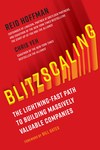 Blitzscaling: The Lightning-Fast Path to Building Massively Valuable Companies by Reid Hoffman & Chris Yeh, Currency
Blitzscaling: The Lightning-Fast Path to Building Massively Valuable Companies by Reid Hoffman & Chris Yeh, Currency
LinkedIn cofounder, legendary investor, and host of the Webby Award-winning Masters of Scale podcast reveals the secret to starting and scaling massively valuable companies.
What entrepreneur or founder doesn’t aspire to build the next Amazon, Facebook, or Airbnb? Yet those who actually manage to do so are exceedingly rare. So what separates the startups that get disrupted and disappear from the ones who grow to become global giants?
The secret is blitzscaling: a set of techniques for scaling up at a dizzying pace that blows competitors out of the water. The objective of Blitzscaling is not to go from zero to one, but from one to one billion—as quickly as possible.
When growing at a breakneck pace, getting to the next level requires very different strategies from those that got you to where you are today. In a book inspired by their popular class at Stanford Business School, Hoffman and Yeh reveal how to navigate the necessary shifts and weather the unique challenges that arise at each stage of a company’s life cycle, such as: how to design business models for igniting and sustaining relentless growth; strategies for hiring and managing; how the role of the founder and company culture must evolve as the business matures, and more.
Whether your business has ten employees or ten thousand, Blitzscaling is the essential playbook for winning in a world where speed is the only competitive advantage that matters.
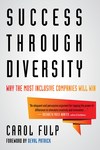 Success Through Diversity: Why the Most Inclusive Companies Will Win by Carol Fulp, Beacon Press
Success Through Diversity: Why the Most Inclusive Companies Will Win by Carol Fulp, Beacon Press
Explores how investing in a racially and ethnically diverse workforce will help make contemporary businesses more dynamic, powerful, and profitable.
In our fast-changing demographic landscape, companies that proactively embrace diversity in all areas of their operations will be best poised to thrive. Renowned business leader and visionary Carol Fulp explores staffing trends in the US and provides a blueprint for what businesses must do to maintain their competitiveness and customer base, including hiring in new ways, aligning managers around diversity, providing new kinds of leadership development, and engaging employees to embrace differences. Using detailed case histories of corporate cultures such as the NFL, Eastern Bank, John Hancock, Hallmark Health, and PepsiCo, as well as her own experiences in the workplace and in advising companies on diversity practice, Fulp demonstrates how people of different races and ethnicities represent an essential asset to contemporary companies and organizations.
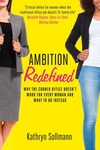 Ambition Redefined: Why the Corner Office Doesn't Work for Every Woman & What to Do Instead by Kathryn Sollmann, Nicholas Brealey
Ambition Redefined: Why the Corner Office Doesn't Work for Every Woman & What to Do Instead by Kathryn Sollmann, Nicholas Brealey
A timely alternative to current women's business books that define professional ambition and success as climbing the corporate ladder.
The path to the corner office is not one all women want or should feel pressured to follow. Sollmann's focus is on the more critical and widespread workplace issue for everyday women—to always work in a way that fits their lives alongside their two major caregiving roles: for children and aging parents.
Sollmann debunks common assumptions such as:
- IT'S NOT "WORTH IT" UNLESS THE SALARY IS HIGH. Women forfeit up to 4X their salaries every year out of the workforce to care for children and/or elderly parents—and it does not take a six-figure salary to achieve long-term financial security.
- FINDING FLEXIBLE WORK IS IMPOSSIBLE. Sollmann shines a bright light on the ever-widening world of flexwork—where women can find many interesting and exciting ways to tuck all generations of their families into a future that is financially secure and safe. The book includes realistic, practical tools for preparing for and finding flexible work within a current job or a new opportunity.
- IT WON'T HAPPEN TO ME. Divorce, death of a spouse, caring for aging parents or adult children are some of the life "you never knows" that all women could experience. Sollmann encourages women to anticipate and buffer life surprises and she shows the profound impact of continual earning, saving, and investing toward a long and comfortable retirement.
- WORK ENDS AT AGE 65. Women who leave the workforce and want to return in their forties, fifties or sixties will be in good company as the ranks of older workers rise. Over the next two decades, adults age 50 and over will have greater rates of workforce participation into their sixth and seventh decades.
Eye-opening and practical, Ambition Redefined shows that when we redefine ambition, we acknowledge that challenging, lucrative work can be found in many flexible ways that favor personal satisfaction over public applause.
 Dark Horse: Achieving Success Through the Pursuit of Fulfillment by Todd Rose & Ogi Ogas, HarperOne
Dark Horse: Achieving Success Through the Pursuit of Fulfillment by Todd Rose & Ogi Ogas, HarperOne
Drawing on their extensive studies in The Laboratory for the Science of the Individual at the Harvard Graduate School of Education, the bestselling author of The End of Average and his research partner examine the flaws in the “standardized” path to achievement and reveal what we can learn from those who have blazed their own ways to success—iconoclasts known as Dark Horses.
If you have ever felt like you just don’t fit, this book will change your life.
Know your long-term goals, work hard (very, very hard), and stay the course in the face of all obstacles until you reach your goal. This is the commonly accepted formula for fulfilling goals and dreams. But what if we have it exactly backwards? While this standard formula works for some it fails for far too many. Then there are those who buck the formula and triumph on their own terms. They are called dark horses. Researchers Todd Rose and Ogi Ogas have studied these dark horses, and in this groundbreaking book, use the experiences of these mavericks to demonstrate that there is a different and better formula for success.
The Dark Horse Project was born at the Harvard Graduate School of Education to research alternative paths to excellence. Dark horses demonstrate that the secret to personal accomplishment is not dependent on connections, money, or standardized test scores. The secret is a special mindset that empowers them to consistently make the right choices to fit their circumstances and complement their unique interests and abilities. The philosophy behind this mindset is simple: it is not the pursuit of excellence that leads to fulfillment but rather the pursuit of fulfillment that leads to excellence.
Dark Horse reveals the five elements of this mindset that have been road-tested by a wide array of individuals nurturing every manner of aspiration. No matter where you are in your career, Rose and Ogas show how the dark horse mindset can guide you to a life of purpose, authenticity, and achievement.
 Reinventing Jobs: A 4-Step Approach for Applying Automation to Work by Ravin Jesuthasan & John Boudreau, Harvard Business Review Press
Reinventing Jobs: A 4-Step Approach for Applying Automation to Work by Ravin Jesuthasan & John Boudreau, Harvard Business Review Press
How to Optimize Human-Machine Work Combinations.
Your organization has made the decision to adopt automation and artificial intelligence technologies. Now, you face difficult and stubborn questions about how to implement that decision: How, when, and where should we apply automation in our organization? Is it a stark choice between humans versus machines? How do we stay on top of these technological trends as work and automation continue to evolve?
Work and human capital experts Ravin Jesuthasan and John Boudreau present leaders with a new set of tools to answer these daunting questions. Transcending the endless debate about humans being replaced by machines, Jesuthasan and Boudreau show how smart leaders instead are optimizing human-automation combinations that are not only more efficient but also generate higher returns on improved performance.
Based on groundbreaking primary research, Reinventing Jobs provides an original, structured approach of four distinct steps—deconstruct, optimize, automate, and reconfigure—to help leaders reinvent how work gets bundled into jobs and create optimal human-machine combinations. Jesuthasan and Boudreau show leaders how to continuously reexamine what a job really is, and they provide the tools for identifying the pivotal performance value of tasks within jobs and how these tasks should be reconstructed into new, more optimal combinations.
With numerous examples and practical advice for applying the four-step process, Reinventing Jobs gives leaders a more precise, planful, and actionable way to decide how, when, and where to apply and optimize work automation.
 Dare to Lead: Brave Work. Tough Conversations. Whole Hearts. by Brené Brown, Random House
Dare to Lead: Brave Work. Tough Conversations. Whole Hearts. by Brené Brown, Random House
In her #1 NYT bestsellers, Brené Brown taught us what it means to dare greatly, rise strong, and brave the wilderness. Now, based on new research conducted with leaders, change makers, and culture shifters, she’s showing us how to put those ideas into practice so we can step up and lead.
Leadership is not about titles, status, and wielding power. A leader is anyone who holds themselves accountable for recognizing the potential in people and ideas, and has the courage to develop that potential.
When we dare to lead, we don’t pretend to have the right answers; we stay curious and ask the right questions. We don’t see power as finite and hoard it; we know that power becomes infinite when we share it with others. We don’t avoid difficult conversations and situations; we lean into vulnerability when it’s necessary to do good work.
But daring leadership in a culture that’s defined by scarcity, fear, and uncertainty requires skill building around traits that are deeply and uniquely human. The irony is that we’re choosing not to invest in developing the hearts and minds of leaders at the exact same time we’re scrambling to figure out what we have to offer that machines and AI can’t do better and faster. What can we do better? Empathy, connection, and courage to start.
Four-time #1 New York Times bestselling author and researcher Brené Brown has spent the past two decades studying the emotions and experiences that give meaning to our lives, and the past seven years working with transformative leaders and teams spanning the globe. She found that leaders in organizations ranging from small entrepreneurial startups and family-owned businesses to nonprofits, civic organizations, and Fortune 50 companies, all ask the same question: How do you cultivate braver, more daring leaders, and how do you embed the value of courage in your culture?
In this new book, Brown uses research, stories, and examples to answer these questions in the no-BS style that millions of readers have come to expect and love. Brené writes, “One of the most important findings of my career is that daring leadership is a collection of skills and practices that are 100% teachable. It’s learning and unlearning that requires brave work, tough conversations, and showing up with your whole heart. Easy? No. Because choosing courage over comfort is not always our default. Worth it? Always. We want to be brave with our lives and our work. It’s why we’re here.”
 The Pan-Industrial Revolution: How New Manufacturing Titans Will Transform the World by Richard D'Aveni, Houghton Mifflin Harcourt
The Pan-Industrial Revolution: How New Manufacturing Titans Will Transform the World by Richard D'Aveni, Houghton Mifflin Harcourt
A stunning look at what will happen to global industry as 3-D printing quickly becomes a worldwide phenomenon–and how this will influence our economic and geopolitical landscape.
Best-selling author Richard D’Aveni contends that the advent of massive, industrial-scale 3-D printing is already happening quietly under the radar, and that it will have a far-reaching impact that most corporate and governmental leaders have yet to anticipate or understand.
3-D printing, also called additive manufacturing, has moved far beyond a desktop technology used by hobbyists to churn out trinkets and toys. In this eye-opening account, D’Aveni reveals how recent breakthrough advances have been secretly adapted by powerful Fortune 500 companies so that they can now manufacture jet engines, huge turbines, airplanes, automobiles, and so much more in a greatly shortened time frame.
Not only is this revolutionary technology transforming the landscape of manufacturing everywhere, but as D’Aveni contends, it is also destined to have a dramatic effect on the world economy. A handful of massively powerful corporations—what D’Aveni calls pan-industrials—will become as important as any tech giant in re-structuring the global order.
 Capitalism in America: A History by Alan Greenspan & Adrian Wooldridge, Penguin Press
Capitalism in America: A History by Alan Greenspan & Adrian Wooldridge, Penguin Press
From the legendary former Fed Chairman and the acclaimed Economist writer and historian, the full, epic story of America’s evolution from a small patchwork of threadbare colonies to the most powerful engine of wealth and innovation the world has ever seen.
From even the start of his fabled career, Alan Greenspan was duly famous for his deep understanding of even the most arcane corners of the American economy, and his restless curiosity to know even more. To the extent possible, he has made a science of understanding how the US economy works almost as a living organism—how it grows and changes, surges and stalls. He has made a particular study of the question of productivity growth, at the heart of which is the riddle of innovation. Where does innovation come from, and how does it spread through a society? And why do some eras see the fruits of innovation spread more democratically, and others, including our own, see the opposite?
In Capitalism in America, Greenspan distills a lifetime of grappling with these questions into a thrilling and profound master reckoning with the decisive drivers of the US economy over the course of its history. In partnership with the celebrated Economist journalist and historian Adrian Wooldridge, he unfolds a tale involving vast landscapes, titanic figures, triumphant breakthroughs, enlightenment ideals as well as terrible moral failings. Every crucial debate is here—from the role of slavery in the antebellum Southern economy to the real impact of FDR’s New Deal to America’s violent mood swings in its openness to global trade and its impact. But to read Capitalism in America is above all to be stirred deeply by the extraordinary productive energies unleashed by millions of ordinary Americans that have driven this country to unprecedented heights of power and prosperity.
At heart, the authors argue, America’s genius has been its unique tolerance for the effects of creative destruction, the ceaseless churn of the old giving way to the new, driven by new people and new ideas. Often messy and painful, creative destruction has also lifted almost all Americans to standards of living unimaginable to even the wealthiest citizens of the world a few generations past. A sense of justice and human decency demands that those who bear the brunt of the pain of change be protected, but America has always accepted more pain for more gain, and its vaunted rise cannot otherwise be understood, or its challenges faced, without recognizing this legacy. For now, in our time, productivity growth has stalled again, stirring up the populist furies. There’s no better moment to apply the lessons of history to the most pressing question we face, that of whether the United States will preserve its preeminence, or see its leadership pass to other, inevitably less democratic powers.
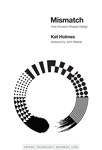 Mismatch: How Inclusion Shapes Design by Kat Holmes & John Maeda, The MIT Press
Mismatch: How Inclusion Shapes Design by Kat Holmes & John Maeda, The MIT Press
How inclusive methods can build elegant design solutions that work for all.
Sometimes, designed objects reject their users: a computer mouse that doesn't work for left-handed people, for example, or a touchscreen payment system that only works for people who read English phrases, have 20/20 vision, and use a credit card. Something as simple as color choices can render a product unusable for millions. These mismatches are the building blocks of exclusion. In Mismatch, Kat Holmes describes how design can lead to exclusion, and how design can also remedy exclusion. Inclusive design methods—designing objects with rather than for excluded users—can create elegant solutions that work well and benefit all.
Holmes tells stories of pioneers of inclusive design, many of whom were drawn to work on inclusion because of their own experiences of exclusion. A gamer and designer who depends on voice recognition shows Holmes his “Wall of Exclusion,” which displays dozens of game controllers that require two hands to operate; an architect shares her firsthand knowledge of how design can fail communities, gleaned from growing up in Detroit's housing projects; an astronomer who began to lose her eyesight adapts a technique called “sonification” so she can “listen” to the stars.
Designing for inclusion is not a feel-good sideline. Holmes shows how inclusion can be a source of innovation and growth, especially for digital technologies. It can be a catalyst for creativity and a boost for the bottom line as a customer base expands. And each time we remedy a mismatched interaction, we create an opportunity for more people to contribute to society in meaningful ways.
 The Job: Work and Its Future in a Time of Radical Change by Ellen Ruppel Shell, Currency
The Job: Work and Its Future in a Time of Radical Change by Ellen Ruppel Shell, Currency
Critically acclaimed journalist Ellen Ruppel Shell uncovers the true cost—political, economic, social, and personal—of America’s mounting anxiety over jobs, and what we can do to regain control over our working lives.
Since 1973, our productivity has grown almost six times faster than our wages. Most of us rank so far below the top earners in the country that the “winners” might as well inhabit another planet. But work is about much more than earning a living. Work gives us our identity, and a sense of purpose and place in this world. And yet, work as we know it is under siege.
Through exhaustive reporting and keen analysis, The Job reveals the startling truths and unveils the pervasive myths that have colored our thinking on one of the most urgent issues of our day: how to build good work in a globalized and digitalized world where middle class jobs seem to be slipping away. Traveling from deep in Appalachia to the heart of the Midwestern rust belt, from a struggling custom clothing maker in Massachusetts to a thriving co-working center in Minnesota, she marshals evidence from a wide range of disciplines to show how our educational system, our politics, and our very sense of self have been held captive to and distorted by outdated notions of what it means to get and keep a good job. We read stories of sausage makers, firefighters, zookeepers, hospital cleaners; we hear from economists, computer scientists, psychologists, and historians. The book’s four sections take us from the challenges we face in scoring a good job today to work’s infinite possibilities in the future. Work, in all its richness, complexity, rewards and pain, is essential for people to flourish. Ellen Ruppel Shell paints a compelling portrait of where we stand today, and points to a promising and hopeful way forward.
 The Laws of Human Nature by Robert Greene, Viking
The Laws of Human Nature by Robert Greene, Viking
From the #1 New York Times-bestselling author of The 48 Laws of Power comes the definitive new book on decoding the behavior of the people around you.
Robert Greene is a master guide for millions of readers, distilling ancient wisdom and philosophy into essential texts for seekers of power, understanding, and mastery. Now he turns to the most important subject of all—understanding people’s drives and motivations, even when they are unconscious of them themselves.
We are social animals. Our very lives depend on our relationships with people. Knowing why people do what they do is the most important tool we can possess, without which our other talents can only take us so far. Drawing from the ideas and examples of Pericles, Queen Elizabeth I, Martin Luther King Jr, and many others, Greene teaches us how to detach ourselves from our own emotions and master self-control, how to develop the empathy that leads to insight, how to look behind people’s masks, and how to resist conformity to develop your singular sense of purpose. Whether at work, in relationships, or in shaping the world around you, The Laws of Human Nature offers brilliant tactics for success, self-improvement, and self-defense.
 How the Internet Happened: From Netscape to the iPhone by Brian McCullough, Liveright
How the Internet Happened: From Netscape to the iPhone by Brian McCullough, Liveright
Tech-guru Brian McCullough delivers a rollicking history of the internet, why it exploded, and how it changed everything.
The internet was never intended for you, opines Brian McCullough in this lively narrative of an era that utterly transformed everything we thought we knew about technology. In How the Internet Happened, he chronicles the whole fascinating story for the first time, beginning in a dusty Illinois basement in 1993, when a group of college kids set off a once-in-an-epoch revolution with what would become the first “dotcom.”
Depicting the lives of now-famous innovators like Netscape’s Marc Andreessen and Facebook’s Mark Zuckerberg, McCullough also reveals surprising quirks and unknown tales as he tracks both the technology and the culture around the internet’s rise. Cinematic in detail and unprecedented in scope, the result both enlightens and informs as it draws back the curtain on the new rhythm of disruption and innovation the internet fostered, and helps to redefine an era that changed every part of our lives.
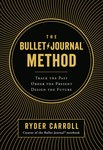 The Bullet Journal Method: Track the Past, Order the Present, Design the Future by Ryder Carroll, Portfolio
The Bullet Journal Method: Track the Past, Order the Present, Design the Future by Ryder Carroll, Portfolio
The long-awaited first book by the founder of the enormously popular Bullet Journal® organizational system.
For years, Ryder Carroll tried countless organizing systems, online and off, but none of them fit the way his mind worked. Out of sheer necessity, he developed a method called the Bullet Journal that helped him become consistently focused and effective. When he started sharing his system with friends who faced similar challenges, it went viral. Just a few years later, to his astonishment, Bullet Journaling is a global movement.
The Bullet Journal Method is about much more than organizing your notes and to-do lists. It’s about what Carroll calls “intentional living”: weeding out distractions and focusing your time and energy in pursuit of what’s truly meaningful, in both your work and your personal life. It’s about spending more time with what you care about, by working on fewer things. His new book shows you how to:
- Track the past: Using nothing more than a pen and paper, create a clear and comprehensive record of your thoughts.
- Order the present: Find daily calm by tackling your to-do list in a more mindful, systematic, and productive way.
- Design the future: Transform your vague curiosities into meaningful goals, and then break those goals into manageable action steps that lead to big change.
Carroll wrote this book for frustrated list-makers, overwhelmed multitaskers, and creatives who need some structure. Whether you’ve used a Bullet Journal for years or have never seen one before, The Bullet Journal Method will help you go from passenger to pilot of your own life.
 Uberland: How Algorithms Are Rewriting the Rules of Work by Alex Rosenblat, University of California Press
Uberland: How Algorithms Are Rewriting the Rules of Work by Alex Rosenblat, University of California Press
Upending our understanding of work in the digital age, Uberland paints a future where any of us might be managed by a faceless boss.
Silicon Valley technology is transforming the way we work, and Uber is leading the charge. An American startup that promised to deliver entrepreneurship for the masses through its technology, Uber instead built a new template for employment using algorithms and Internet platforms.
The neutral language of technology masks the powerful influence algorithms have across the New Economy. Uberland chronicles the stories of drivers in more than twenty-five cities in the United States and Canada over four years, shedding light on their working conditions and providing a window into how they feel behind the wheel. The book also explores Uber’s outsized influence around the world: the billion-dollar company is now influencing everything from debates about sexual harassment and transportation regulations to racial equality campaigns and labor rights initiatives.
Based on award-winning technology ethnographer Alex Rosenblat’s firsthand experience of riding over 5,000 miles with Uber drivers, daily visits to online forums, and face-to-face discussions with senior Uber employees, Uberland goes beyond the headlines to reveal the complicated politics of popular technologies that are manipulating both workers and consumers.
 Lab Rats: How Silicon Valley Made Work Miserable for the Rest of Us by Dan Lyons, Hachette Books
Lab Rats: How Silicon Valley Made Work Miserable for the Rest of Us by Dan Lyons, Hachette Books
New York Times bestselling author Dan Lyons exposes how the "new oligarchs" of Silicon Valley have turned technology into a tool for oppressing workers in this "passionate" (Kirkus) and "darkly funny" (Publishers Weekly) examination of workplace culture.
At a time of soaring corporate profits and plenty of HR lip service about "wellness," millions of workers—in virtually every industry—are deeply unhappy. Why did work become so miserable? Who is responsible? And does any company have a model for doing it right?
For two years, Lyons ventured in search of answers. From the innovation-crazed headquarters of the Ford Motor Company in Detroit, to a cult-like "Holocracy" workshop in San Francisco, and to corporate trainers who specialize in… Legos, Lyons immersed himself in the often half-baked and frequently lucrative world of what passes for management science today. He shows how new tools, workplace practices, and business models championed by tech's empathy-impaired power brokers have shattered the social contract that once existed between companies and their employees. These dystopian beliefs—often masked by pithy slogans like "We're a Team, Not a Family"—have dire consequences: millions of workers who are subject to constant change, dehumanizing technologies—even health risks.
A few companies, however, get it right. With Lab Rats, Lyons makes a passionate plea for business leaders to understand this dangerous transformation, showing how profit and happy employees can indeed coexist.
 Erasing Institutional Bias: How to Create Systemic Change for Organizational Inclusion by Tiffany Jana & Ashley Diaz Mejias, Berrett-Koehler
Erasing Institutional Bias: How to Create Systemic Change for Organizational Inclusion by Tiffany Jana & Ashley Diaz Mejias, Berrett-Koehler
All humans have bias, and as a result, so do the institutions we build. Internationally sought after diversity consultant Tiffany Jana offers concrete ways for anyone to work against institutional bias no matter what their position is in an organization.
While it is easy to identify intentionally built systems of oppression like Jim Crow or the paralysis caused by the glass ceiling for women in the workplace, confronting systems that perpetuate subtle, unconscious bias is much harder. Erasing Institutional Bias will help people tackle structural bias regardless of their positional power. Eliminating systemic bias can seem an insurmountable task from the vantage point of an ordinary individual, yet Jana and Mejias empower readers to recognize that each of us has the ability to affect systemic bias through a deliberate, coordinated effort. Institutional bias afflicts all industries—including business, education, health care, government, tech, the arts, nonprofits, and finance and banking. Among the types of institutional bias addressed are hiring bias, gender bias, racial bias, occupational bias, and customer bias. Jana and Mejias focus their attention on bias in the workplace and give readers practices and activities to create organizational trust to challenge these implicit biases. Erasing Institutional Bias will help people recognize that each of us has the power to affect systemic bias. Each of us can evaluate our own current role in perpetuating systemic bias and define our new role in breaking down systemic bias.
 The Book of Beautiful Questions: The Powerful Questions That Will Help You Decide, Create, Connect, and Lead by Warren Berger, Bloomsbury Publishing
The Book of Beautiful Questions: The Powerful Questions That Will Help You Decide, Create, Connect, and Lead by Warren Berger, Bloomsbury Publishing
From the bestselling author of A More Beautiful Question, hundreds of big and small questions that harness the magic of inquiry to tackle challenges at work, in relationships, and beyond.
As Warren Berger showed in A More Beautiful Question, the humble question can be a powerful tool. By asking questions, we can analyze, learn, and move forward in the face of uncertainty. When confronted with almost any demanding situation, the act of questioning can help guide us to smart decisions. But the questions must be the right ones; the ones that cut to the heart of complexity, or that enable us to see an old problem in a fresh way.
The Book of Beautiful Questions contains over 200 such questions addressing everyday dilemmas of all types: getting out of a career rut, generating fresh ideas, overcoming a fear of failure, checking your own biases, and many more. The book is about asking the right questions, at the right time, in order to make the best choices when it truly counts. Each beautiful question is thoughtful, provocative, and actionable, meaning it can be applied immediately to bring about change. Along with each question, Berger offers insights gleaned from his own research, as well as guidance from leading thinkers and experts, including Adam Grant, Elizabeth Gilbert, Atul Gawande, and Lin-Manuel Miranda. The Book of Beautiful Questions provides essential questions to guide readers to their own answers where it matters most.
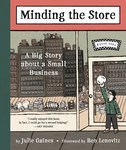 Minding the Store: A Big Story about a Small Business by Julie Gaines, illustrated by Ben Lenovitz, Algonquin Books
Minding the Store: A Big Story about a Small Business by Julie Gaines, illustrated by Ben Lenovitz, Algonquin Books
In this charming graphic memoir, the founder of an iconic housewares shop recounts the ups and downs—and ups again—of starting a family business, starting a family, and staying true to one’s path while trying to make it in the Big City.
Whether it’s a set of vintage plates from a 1920s steamship, a mug with a New Yorker cartoon on it, a tin of sprinkles designed by Amy Sedaris, or a juice glass from a Jazz Age hotel, Fishs Eddy products are distinctly recognizable. A New York institution, Fishs Eddy also remains a family business whose owners endured the same challenges as many family businesses—and lived to write about it in this tale filled with humorous characterizations of opinionated relatives, nosy neighbors, quirky employees, and above all the eccentric foibles of the founders themselves. Readers come to know author Julie Gaines and her husband, with whom she founded the store, and because this is a family business, the illustrations are all in the family, too: their son Ben Lenovitz’s drawings bring Fishs Eddy to life with a witty style a la Roz Chast and Ben Katchor.
Over the years the store has collaborated with artists and celebrities such as Charley Harper and Todd Oldham, Alan Cumming, and many others to produce original designs that are now found in thousands of stores throughout the country, and Fishs Eddy has garnered a huge amount of media coverage. A great gift for anyone who has ever dreamed of opening a little business—or anyone with any kind of dream—Minding the Store offers wisdom, inspiration, and an exceedingly entertaining story.


